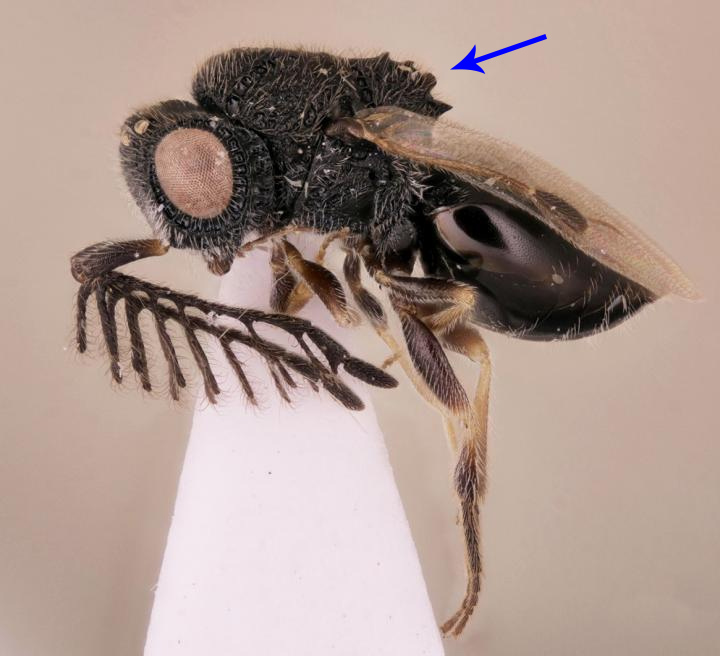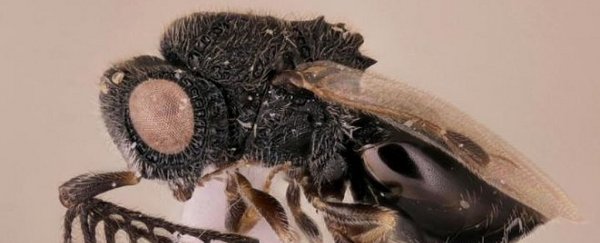It's only the size of a sesame seed, but a newly discovered parasitoid wasp has enormous saw-like spines that could be used for a grisly purpose. Dendrocerus scutellaris could be looking for mates - or tearing its way out of a host's body from the inside.
We don't actually know for sure, because the Costa Rican insect hasn't been observed by scientists in the wild - it's only known from preserved specimens in London's Natural History Museum collected in 1985.
But a research team led by PhD candidate Carolyn Trietsch of the Frost Entomological Museum at Penn State was able to piece together details about how the wasp lives based on other species of the Dendrocerus genus, and its morphology, even with specimens over 30 years old.
Because other Dendrocerus wasps are parasitoids, it's reasonable to conclude that D. scutellaris is also a parasitoid. Not to be confused with parasitic, which means to live in a host without killing it, parasitoids live free of a host, but provide their eggs with one - often the young larvae will feast on the body of their host before they move on.
There are two kinds of parasitoids. Ectoparasitoids will lay their eggs on or near a host, so that the larvae can latch onto the host once they have hatched, and feed on it from the outside.
Endoparasitoids, on the other hand, lay their eggs directly inside the host. The larvae hatch, and devour the host from the inside out. They'll stay safely tucked inside the host's body until big enough to face the world, then tear their way open, leaving a dead husk behind them.
It's difficult to tell which insects D. scutellaris would lay its eggs in, but based on its morphology, it is an endoparasitoid.
In fact, another member of the Dendrocerus genus, D. carpenteri, is what is known as a hyperparasite - it lays its eggs inside another wasp, which itself parasites aphids. So it's possible that D. scutellaris is also a hyperparasite, the researchers noted.
But there are noticeable differences between D. scutellaris and other Dendrocerus wasps; namely the shape of its mandible, which is straight instead of pointed, and a saw-like comb of spikes on its back.
 D. scutellaris; arrow shows spike location (Carolyn Trietsch)
D. scutellaris; arrow shows spike location (Carolyn Trietsch)
There could be a few different uses for this comb of spikes; the researchers believe it could be used to rub against the inside of the host's body, using them like a saw to effect an escape.
This is reinforced by the mandible shape, suggesting that the insect could not use its mandible to pierce a hole and escape its gizzardy prison that way.
It sounds like a horrible nightmare, but, according to the researchers, parasitoid wasps can be useful.
"While their lives may sound gruesome, parasitoid wasps are harmless to humans and can even be helpful," they said.
"Depending on the host they parasitise, parasitoids can benefit agriculture by controlling pest insects like aphids that damage crops."
Now that they know the wasp exists, entomologists may be able to track it down in the wild to learn more about its lifestyle.
The research has been published in the Biodiversity Data Journal.
